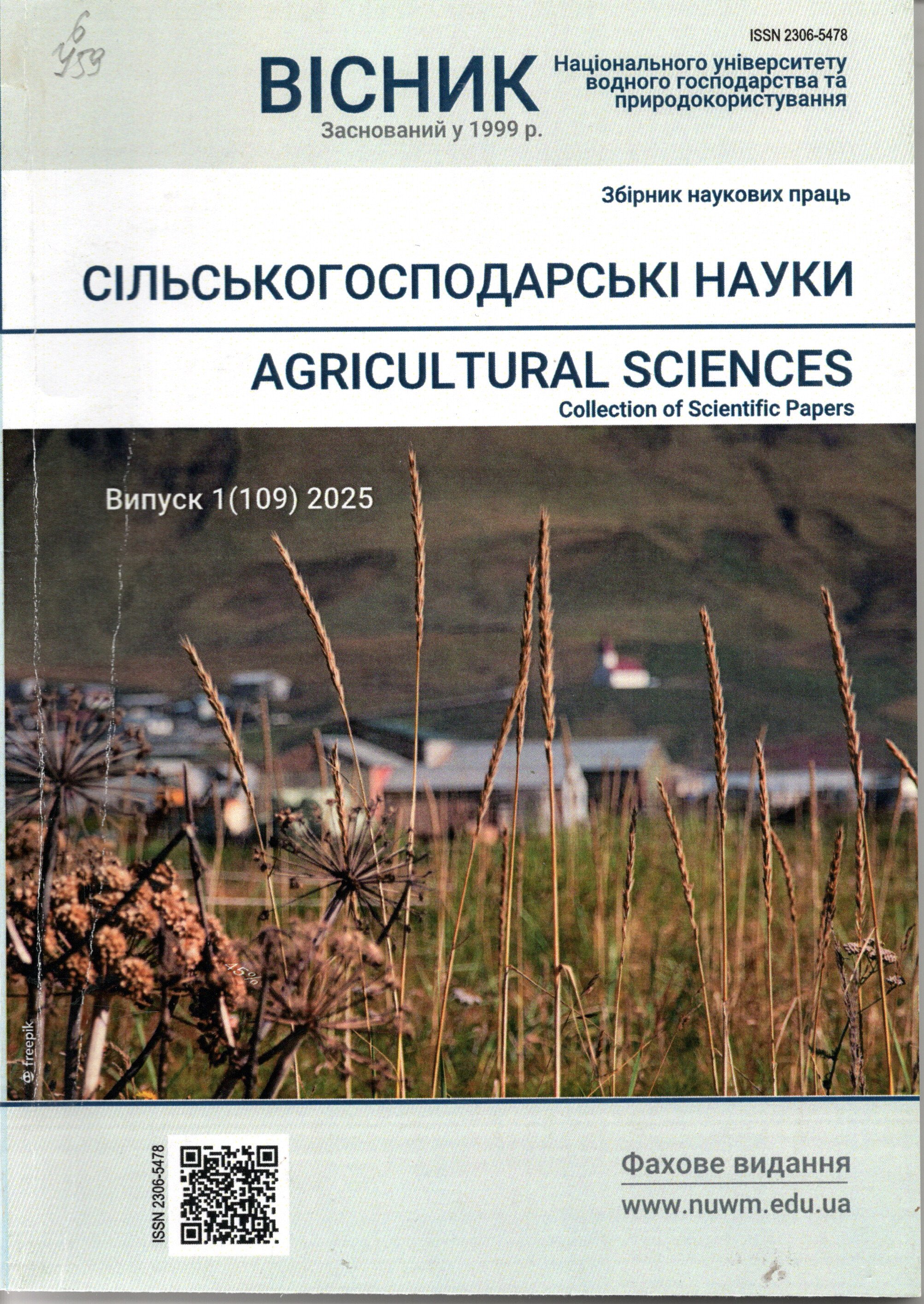REALIZATION OF PRODUCTIVITY POTENTIAL OF UKRAINIAN MAIZE (ZEA MAYS L.) HYBRIDS OF DIFFERENT MATURITY GROUPS IN THE WESTERN FOREST-STEPPE WITH FOLIAR FEEDING
DOI:
https://doi.org/10.31713/vs120258Keywords:
corn, maturity group, productivity, photosynthetically active radiation, utilization factor, correlationAbstract
The study focuses on investigating the effect of foliar fertilization with microfertilisers "Orakul Multicomplex" and "Orakul Biozink" and growth stimulant "Vympel" against the background of mineral fertilization N120P90K120 on the efficiency of photosynthetically active radiation (PAR) use and consequently on the grain yield of maize under the conditions of the Western Forest Steppe zone in Ukraine. The relevance of this study is driven by global climate change, which is leading to increased weather instability, changes in temperature regimes and reduced precipitation in some regions. Under such conditions, it is important to find ways to optimise photosynthetic processes in plants, which is necessary to ensure stable and high yields of agricultural crops. The research was conducted on dark grey podzolic soil in the Rivne district. For experiments was use the hybrids of Ukrainian breeding from different maturity groups: early (FAO 170), medium-early (FAO 270) and medium-mature (FAO 300). It was found that the level of PAR utilisation (KPAR) is a key factor in achieving maximum yield levels, as it has a direct correlation with the programmed yield of maize. The results showed that KPAR varied depending on the maturity group of the crop and the fertiliser used. For example, the early maturing hybrid DN NUR (FAO 170) had the lowest KPAR in the study, both with and without foliar fertilisation. It was found that the use of microfertilisers and growth stimulants against a background of full mineral fertilisation increased KPAR. In particular, for the hybrid DN Galatea (FAO 260), KPAR reached 1.40%, which brought the yield of the medium-early hybrid closer to that of the medium-maturing hybrid DN Demetra (FAO 300). The highest yield increases were observed in the foliar fertilisation treatments at the 3– 5 and 7–8 leaf stages, confirming the importance of timely application of these products to optimise photosynthetic processes in plants. This approach allows the maximisation of the maise hybridsof potential of Ukrainian breeding, enhancing their effectiveness under specific agroclimatic conditions.Downloads
Published
2025-11-06
Issue
Section
Articles

